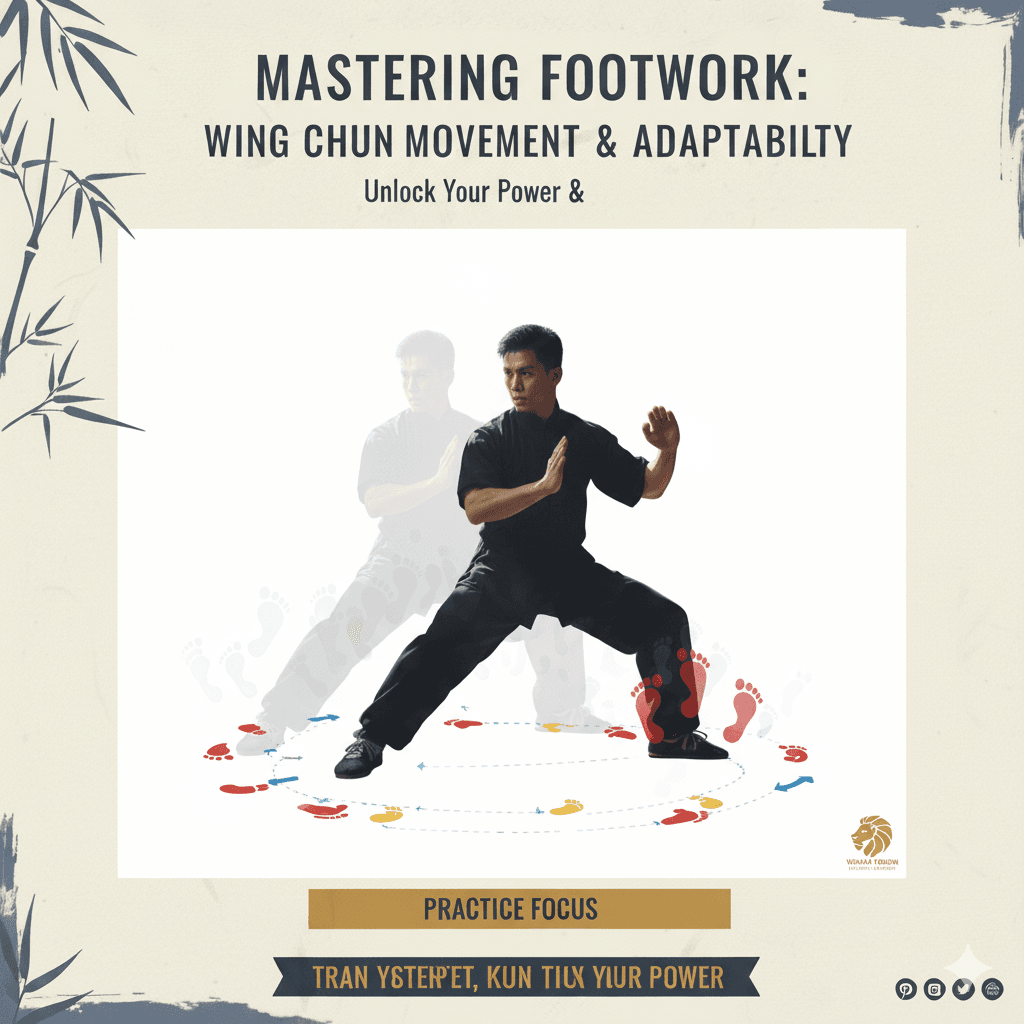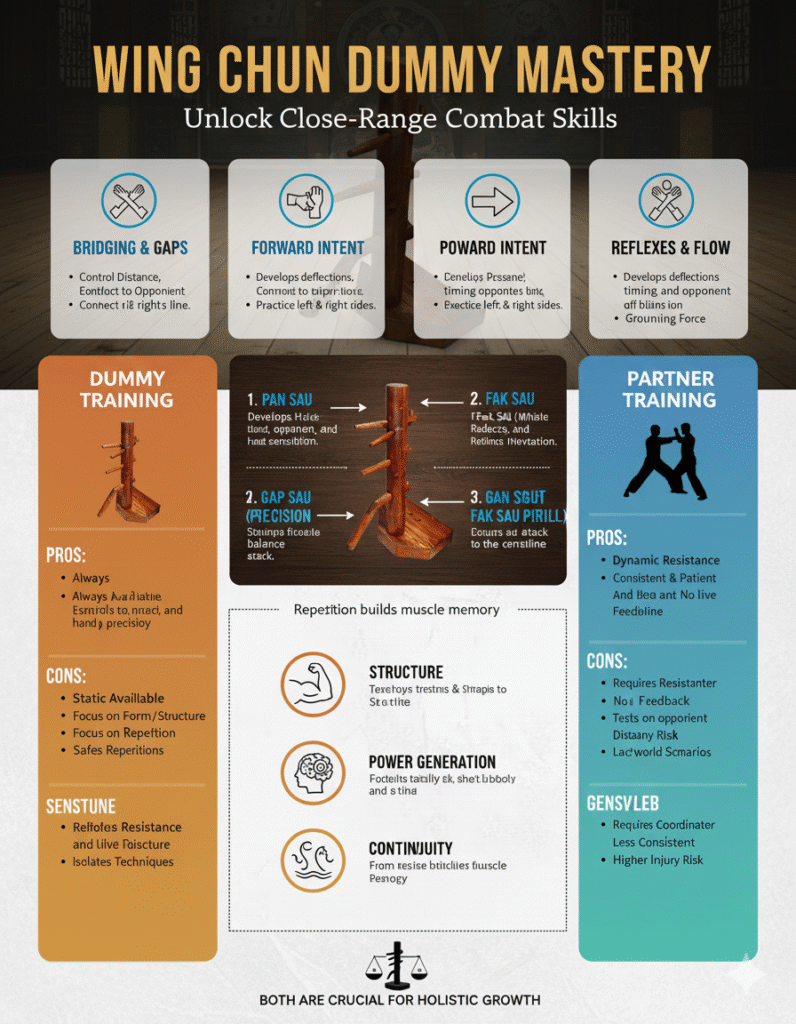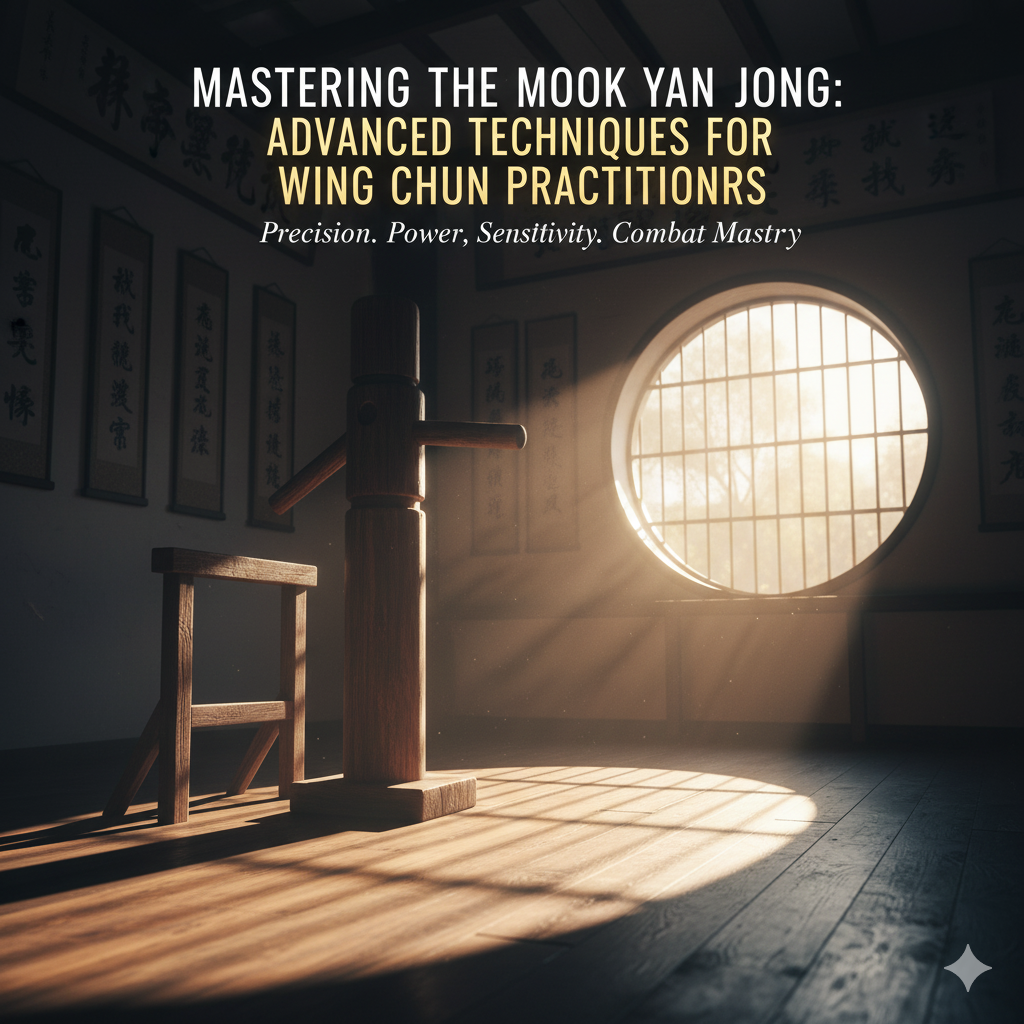Footwork is a fundamental aspect of martial arts that contributes significantly to a practitioner’s effectiveness in combat. It encompasses the movements and positioning of one’s feet, which are crucial for maintaining balance, enhancing agility, and ensuring overall combat efficiency.
Effective footwork enables martial artists to maneuver deftly, providing them with the ability to both evade attacks and close the distance to engage an opponent. In many martial arts disciplines, the foundation of technique and strategy is built upon the capacity to move fluidly and responsively.
The role of footwork in martial arts cannot be overstated. It serves as the mechanism through which a martial artist can generate power for strikes while maintaining the necessary balance to absorb or evade incoming attacks.
Proper footwork allows practitioners to adopt effective stances that maximize their readiness, enabling quick transitions between offensive and defensive actions. Moreover, skilled footwork aids in the prediction and effective response to an opponent’s movements, making it an invaluable tool for strategic engagement.
Furthermore, footwork is not merely about rapid movement; it also involves an understanding of distance and timing. A martial artist must learn to gauge the distance between themselves and their opponent, adjusting their position to capitalize on openings while minimizing vulnerabilities.
This strategic depth is integral to the practice and execution of martial arts techniques. Through repetitive practice, martial artists cultivate the muscle memory and spatial awareness necessary to execute footwork with precision and confidence.
In conclusion, mastery of footwork is essential for any martial artist seeking to enhance their performance in combat. By focusing on the intricacies of foot positioning, balance, and movement dynamics, practitioners can achieve greater agility and response capabilities, ultimately elevating their combat skills and effectiveness in various martial arts scenarios.
Understanding Mook Yan Jong: The Wooden Dummy

Visuals and videos are added as random thoughts 💭 💭 💭
The Mook Yan Jong, commonly referred to as the wooden dummy, is a critical training apparatus in Wing Chun martial arts. This traditional tool serves as a platform for practitioners to develop essential techniques, emphasizing the interconnection between striking, blocking, and footwork. With its origins rooted in the development of Wing Chun itself, the dummy is a testament to the martial discipline’s history and evolution over the centuries.
Constructed typically from wood, the Mook Yan Jong features several padded arms and a face, designed to replicate an opponent’s structure and movements. This unique design allows for a multifaceted training approach that enhances a practitioner’s ability.
By practicing techniques against the dummy, individuals can refine their accuracy, develop power in strikes, and enhance the timing necessary for effective blocking.
Moreover, the structure helps to build muscle memory, which is an essential element in martial arts training.
Incorporating footwork into Mook Yan Jong practices brings another layer of complexity and effectiveness. Practitioners learn to integrate their foot movement seamlessly with their strikes and defenses, which is crucial for adaptability in a dynamic combat scenario. The ability to slip, pivot, and advance or retreat while maintaining precision in technique is a hallmark of efficient Wing Chun training.
Historically, the wooden dummy has been revered not only for its practical applications but also as a symbol of the Wing Chun martial arts philosophy.
It embodies the balance of power and finesse, urging practitioners to synchronize their skills in a harmonious manner. As students engage with the Mook Yan Jong, they partake in a storied legacy, one that emphasizes continuous improvement through disciplined practice.
The Importance of Integrating Footwork with Mook Yan Jong Training
Integrating footwork with Mook Yan Jong training is essential for practitioners seeking to enhance their martial arts skills. Mook Yan Jong, or the wooden dummy, serves as a crucial training tool in various traditional martial arts, particularly in Wing Chun.
However, the effectiveness of this training diminishes significantly without the incorporation of footwork techniques. Proper footwork allows practitioners to maintain optimal distancing and angles when engaging with the dummy, which is vital in any combat scenario.
When striking at the dummy, footwork enables martial artists to create space and effectively maneuver their body, thereby improving their overall striking precision.
The ability to shift weight fluidly and adjust stance contributes immensely to enhancing the power and accuracy of strikes. Practicing footwork alongside Mook Yan Jong facilitates a deeper understanding of positioning and timing, both of which are crucial in evading attacks and delivering effective counter-strikes.
The dynamic interaction between foot movement and the controlled environment of the dummy provides valuable insights into real combat situations.

Furthermore, integrating footwork promotes responsiveness and adaptability, both vital attributes for martial artists. During Mook Yan Jong practice, the predictable movement patterns of the dummy would typically encourage a static approach.
However, adding footwork exercises compels practitioners to adapt to changing circumstances, simulating a more dynamic fight scene.
This adaptability extends beyond the dummy and into sparring and live combat scenarios, where quick repositioning can mean the difference between success and failure.
Therefore, understanding how to combine footwork with Mook Yan Jong enhances not only individual skills but also overall martial prowess.
Basic Footwork Patterns in Martial Arts
Footwork serves as an essential component of martial arts, enabling practitioners to enhance their agility, balance, and overall effectiveness during combat. Several fundamental footwork patterns, including advancing, retreating, sidestepping, and pivoting, are foundational techniques that can significantly impact a martial artist’s performance.
Each of these patterns can be thoroughly integrated into Mook Yan Jong drills, facilitating the development of essential skills.
Advancing involves moving forward towards an opponent or target, allowing practitioners to close the distance while maintaining an optimal stance.
This movement is crucial in initiating offense or preserving control in a confrontational scenario. In Mook Yan Jong practice, advancing can be applied by stepping forward while executing strikes or techniques, thereby reinforcing the connection between footwork and upper body actions.
Conversely, retreating is the action of moving backward, often used to create distance between oneself and an opponent.

This footwork pattern becomes particularly valuable in defensive situations, allowing martial artists to evade attacks while repositioning themselves for a counter. During Mook Yan Jong drills, practitioners can rehearse retreating combined with defensive maneuvers, thus integrating a fluid escape strategy alongside their techniques.
Sidestepping, or lateral movement, provides an effective way to evade incoming attacks while maintaining the ability to counter-attack. This pattern is instrumental in creating angles, a tactical advantage in martial arts.
In Mook Yan Jong exercises, sidestepping can be practiced through drills that encourage using angular footwork while executing strikes or defenses, reinforcing the importance of spatial awareness and dynamic movement.
Pivoting, the action of rotating on one foot while keeping the other foot grounded, allows martial artists to face an opponent while changing direction.
This technique is particularly advantageous in aligning oneself for strikes or avoiding incoming attacks. Integrating pivoting in Mook Yan Jong training helps practitioners develop fluidity in movement and strengthens their understanding of how footwork underpins overall technique application.
Specific Drills for Combining Footwork and Mook Yan Jong Techniques
Integrating footwork with Mook Yan Jong techniques is essential for developing precision, timing, and balance in martial arts practice. To enhance these skills, several drills can be implemented, each focusing on different aspects of movement and application.
Below, we will outline a few specific drills designed to effectively blend footwork patterns with Mook Yan Jong techniques.
One effective drill is the “Forward Step and Strike.” Begin in a ready stance in front of the Mook Yan Jong. Using your lead foot, step forward while simultaneously executing a straight punch or palm strike on the striking surface.
This drill not only reinforces the importance of forward movement but also emphasizes the connection between footwork and striking precision. Repeat this drill multiple times, alternating the lead foot and varying the techniques employed.
The “Lateral Movement and Parry” drill can be utilized to cultivate balance and lateral footwork. Start by positioning yourself beside the Mook Yan Jong. Practice stepping to the side with your lead foot while performing a parry movement with the opposite hand.

This approach trains the student to maintain balance and react effectively while moving laterally. Focus on keeping your knees slightly bent to aid stability and develop fluidity in transitions between footwork and parrying techniques.
A third drill, known as “Backwards Counter,” involves stepping back from the Mook Yan Jong while executing a counter technique. Begin by stepping back with your rear foot, maintaining a stable stance.
As you retake the initial position, practice delivering a counter technique, such as a jab or hook, aimed toward the striking surface. This drill enhances timing and spatial awareness, crucial for executing counters effectively within a fight scenario.
As these drills are practiced regularly, they will foster improved coordination and a deeper understanding of how footwork integrates with different Mook Yan Jong techniques, ultimately contributing to a more skilled martial artist.
Common Mistakes to Avoid when Integrating Footwork
Practitioners often face several challenges when merging footwork techniques with Mook Yan Jong training.
One of the most frequent mistakes is neglecting proper posture. Maintaining an upright posture is crucial, as it affects balance and the effectiveness of movements. Slouching or leaning too far forward can compromise stability, leading to ineffective strikes and diminished control.
Ensuring that the spine remains aligned and that the core is engaged enhances not only balance but also the power and precision of footwork.
Another common mistake is overextending movements. In the pursuit of executing expansive and powerful footwork, practitioners may inadvertently reach too far, which can lead to off-balance positions.
Overextension can also result in poor closing distance during training, making it difficult to effectively transition between striking and moving. It is vital to focus on controlled movements that allow for swift adjustments, enabling practitioners to maintain balance while remaining ready for counter-attacks.

Additionally, inconsistency in practice routines is a significant pitfall. Footwork, much like other skills, requires regular and dedicated practice to develop muscle memory.
Infrequent training results in a lack of fluidity in movement and can hinder the automatic response required during sparring or self-defense situations. Practitioners should establish a disciplined training schedule that prioritizes footwork drills, integrating them consistently with Mook Yan Jong techniques.
This approach ensures that footwork becomes second nature, allowing for smoother execution and quicker reactions when facing opponents.
By being mindful of these common mistakes—maintaining proper posture, avoiding overextension, and committing to consistent practice—practitioners can effectively enhance their footwork when training with Mook Yan Jong.
This attention to detail not only improves individual performance but also contributes to overall skill development.
The Role of Visualization in Improving Footwork with Mook Yan Jong
Visualization techniques play a significant role in martial arts training, particularly in enhancing footwork performance in disciplines such as Mook Yan Jong. By mentally rehearsing various footwork movements, practitioners can promote better understanding and execution of techniques during physical practice.
This method involves imagining oneself performing specific footwork patterns while seamlessly integrating them with the principles of Mook Yan Jong. The cognitive rehearsal fosters a deeper connection between the mind and body, crucial for effective martial arts execution.
One of the primary benefits of utilizing visualization is its impact on muscle memory. When a practitioner vividly imagines themselves executing footwork, the brain initiates similar neural pathways as if they were physically performing the movements.
This process helps reinforce the coordination, agility, and balance required in Mook Yan Jong, thereby facilitating quicker reflexes and more fluid motion during sparring or forms practice.

Regularly engaging in mental imagery of footwork allows martial artists to refine their techniques beyond physical training sessions.
Moreover, visualization enhances strategic thinking, an essential element in martial arts. By envisioning different scenarios in which footwork plays a vital role in a defense or counterattack, practitioners can mentally simulate various encounters.
This preparation allows them to develop strategies that can be applied in real-life situations, thus improving both tactical decision-making and movement fluidity. Consequently, a practitioner who effectively employs visualization is likely to feel more confident and capable during actual encounters.
In conclusion, integrating visualization into footwork training with Mook Yan Jong not only strengthens muscle memory but also sharpens strategic thinking, leading to improved overall performance.
By dedicating time to mental rehearsal, martial artists can enable a more profound mastery of the intricate dance that is footwork in martial arts.
Real-Life Application: Sparring with Integrated Footwork
Footwork is a critical component in martial arts, particularly when integrated with techniques from Mook Yan Jong, or the wooden dummy.
In sparring situations, improved footwork can yield significant advantages by enhancing both offensive and defensive capabilities.
By mastering the interplay between footwork and Mook Yan Jong techniques, practitioners can create a fluid transition between attacking and evading, allowing for a more dynamic combat experience.
For instance, in a sparring match, a fighter who utilizes effective footwork to maneuver around their opponent can create openings for strikes while simultaneously maintaining a safe distance.

This ability not only facilitates better offensive strategies but also enhances defensive measures.
When an athlete positions themselves correctly using agile footwork, they minimize the risk of being hit while maximizing their opportunity to counterattack.
The principles learned from Mook Yan Jong, such as structure and timing, complement this footwork, leading to a seamless flow of actions that can confuse and control the opponent.
Additionally, integrating footwork with Mook Yan Jong allows for the application of various techniques in real-time.
For example, when a fighter anticipates an opponent’s move, they can employ sidesteps or pivots to evade strikes while launching counteroffensive techniques inspired by Mook Yan Jong’s striking sequences.
This adaptability is invaluable, as it develops a practitioner’s ability to react instantaneously in response to changing dynamics during sparring bouts.
Moreover, the controlled environment of practicing Mook Yan Jong can help learners internalize footwork patterns.
As they gain proficiency in specific movements, these patterns can be instinctively reproduced in sparring situations.
The ongoing interplay between practice and application cultivates an advanced skill set, allowing fighters to execute effective strategies under pressure.
This deliberate integration of footwork with Mook Yan Jong ultimately enhances a martial artist’s performance in sparring, leading to improved outcomes in competitive settings.
Conclusion
In mastering the art of martial arts, integrating footwork with Mook Yan Jong training emerges as a vital component. Throughout this blog post, we explored the intricate relationship between footwork techniques and the wooden dummy form, highlighting how this integration can enhance the overall performance and effectiveness of a practitioner.
The essence of Mook Yan Jong lies not only in the execution of techniques but significantly in the ability to move seamlessly and adaptively within a space.
This integration allows martial artists to develop a deeper understanding of their body mechanics and spatial awareness.
Practicing footwork in conjunction with Mook Yan Jong enhances timing, balance, and agility, which are crucial for effective self-defense.
It shifts the focus from merely repeating forms to embodying the principles of movement, thus elevating the training experience.
By weaving footwork insights into the wooden dummy practice, one cultivates an adaptable mindset that can respond dynamically to various combat situations.
Moreover, consistent and diligent practice is essential for mastering both footwork and Mook Yan Jong techniques.
Establishing a regular training routine helps solidify the connection between footwork and the execution of forms. Practitioners are encouraged to approach this integration with an experimental mindset, allowing for innovation and adaptation in their techniques.
Engaging with peers or instructors can further enrich this learning process by providing feedback and different perspectives.
Ultimately, the journey toward mastery is paved with persistent effort and a willingness to integrate these vital training elements.
In summary, the integration of footwork with Mook Yan Jong serves as a pathway to enhanced martial arts proficiency.
Practitioners who embrace this approach will likely experience significant improvements in their skills and abilities, underscoring the importance of continuous and dedicated practice.


